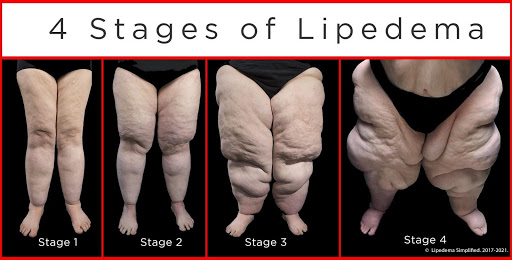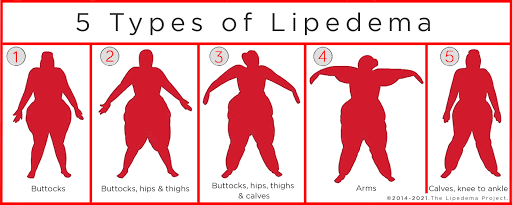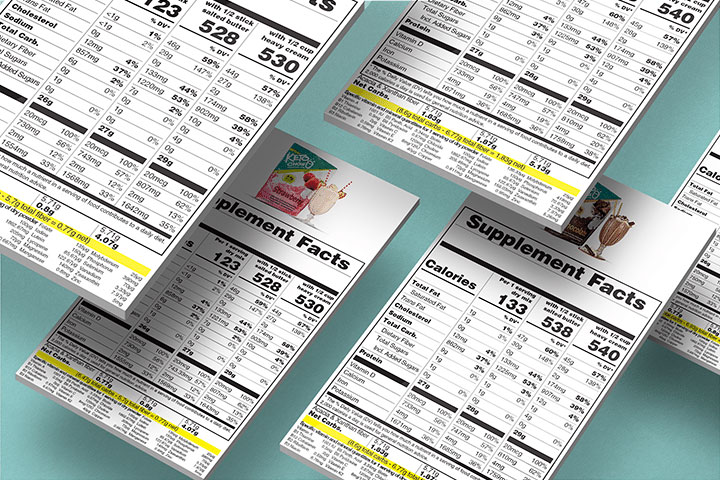Leslyn Keith, OTD, CLT-LANA
President, Lipedema Project
Director of Research
Lipedema (made up of lip meaning fat, and edema or swelling) is a disproportionate deposition of fat and fluid on the lower half of the body that can give the appearance of a lower body completely incongruent from the upper half. Often confused with simple obesity, lipedema affects women almost exclusively.
In fact, as many as 17 million women in the US and over 350 million women worldwide may have this disfiguring condition and may not even know it.
Even more startling is that most people, including the women themselves, would place the blame on out-of-control eating and a lack of exercise, or other lifestyle choices, and not a medical condition.
Women with lipedema are typically members of a not-so-exclusive club of “lifelong dieters” and have often faced anti-fat bias and stigma early in life due to their apparent inability to “control themselves.” After decades of failed weight loss attempts, many women have understandably given up.
Although very low-calorie, low-fat diets would reduce the size of their upper body, not even the addition of intense physical exercise would have any appreciable effect on lower body fat, making the disproportion even worse.
What is Lipedema?

Although lipedema shares some characteristics with obesity (which can often occur alongside this condition), lipedema is a disease with a distinct presentation and pathology all its own.
Symptoms of lipedema include:
- Symmetrical maldistribution of lower body fat, with the feet unaffected, that may also include the upper arms
- Appearance of an “ankle cuff” as the fat deposits abruptly end just above the ankle
- Hypersensitivity to pressure and pain in areas of fat deposition
- Bruising with little or no evident trauma
- Grainy feel to fatty tissue due to nodules that can be sand grain or larger size
- Corrugated or “mattress-like” appearance of skin
- Progression, with increasing weight, fat deposition, pain and swelling, if not managed
- Reduced quality of life due to immobility, isolation, and depression
Onset and exacerbation of this condition are little understood. The first appearance of lipedema symptoms seems to typically coincide with periods of hormonal change in a woman’s life, such as puberty, pregnancy, and perimenopause, suggesting a connection to female sex hormones.
Commonly, but not always, many women in a family will share symptoms of lipedema, suggesting possible genetic underpinnings. Onset of lipedema symptoms has also been associated with major trauma or surgery (especially gynecological surgery).
Diagnosis

There are no blood tests or imaging procedures that can clearly identify and lead to the diagnosis of lipedema. Currently, the diagnosis can only be arrived at by a skilled clinician who recognizes and understands the condition. Take a look at the Lipedema Project Provider Directory to find such a knowledgeable clinician.
Treatment

While a bonafide diagnosis from a physician is welcome, it is not always necessary for gaining access to treatment for lipedema, unless a surgical option is desired. Conservative treatment includes:
- Manual Lymph Drainage (specialized massage to encourage lymph flow)
- Compression Therapy (bandaging, compression stockings)
- Decongestive Exercises, including deep breathing
- Skin Care Practices
- Nutrition
- Psycho-social care
Other noninvasive treatments may include the use of a pneumatic compression pump (a mechanical massage of tissues), vibration, rebounding, dry brushing and more.
A certified lymphedema therapist (lymphedema is a disorder of the lymphatic system) is also trained in the proper treatment of lipedema. To find a certified therapist, consult the Klose Training Therapist Directory.
Nutrition & Diet

Treatment has traditionally focused on symptom management and hopefully halting the progression of lipedema. Ever since this condition was first described by physicians at the Mayo Clinic in 1940, however, there has been a strongly held belief that lipedema is impervious to weight loss diets and exercise.
Now, however, we are coming to understand differently. Many women with lipedema are now experimenting with carbohydrate restriction and seeing amazing results. Although women with lipedema are very concerned about weight management and reducing lower body fat, the benefits of a ketogenic diet modified for lipedema don’t stop there.
Women regularly post in Facebook groups about reduction or complete resolution of pain and swelling, increased energy, and lifting of “brain fog” (sometimes within weeks of adopting a ketogenic diet) along with never-before-experienced shrinking of their lower body.
© 2021. Lipedema Simplified. All rights reserved. Used with permission.
Learn More
Documentary – The Disease They Call FAT
The Lipedema Project https://lipedemaproject.org/
Lipedema Simplified https://lipedema-simplified.org/
Facebook groups:
Lipedema/Lipoedema Simplified Support
Ketogenic Solution for Lipedema & Lymphedema Symposiums
























